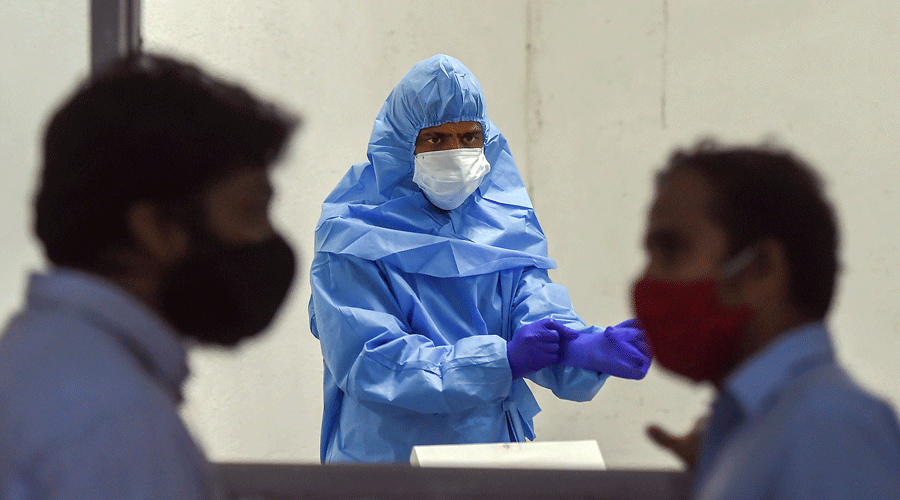The case fatality rates among Covid-19 patients, a measure used by the Union health ministry to suggest India has among the lowest mortality rates in the world, is not a good measure for geographical comparisons, health researchers said on Tuesday.
Researchers in Switzerland, the UK and the US have said that case fatality rates (CFR) — the proportion of deaths among lab-confirmed infections — do not predict the overall mortality from Covid-19 well and should not be used for policy evaluation or geographical comparisons.
Their study has shown that the infection fatality ratio (IFR) or the symptomatic case fatality ratio (sCFR) are alternative measures superior to the CFR that vary less with geography and could help assess health-services capacity and emergency preparedness.
Julien Riou at the Institute of Social and Preventive Medicine at the University of Bern, Switzerland, and his collaborators have stressed that CFRs are misleading because of two factors – they do not take into account the average 14-day lag between the onset of symptoms and deaths, or the actual number of infections in the population.
The IFR measures the proportion of deaths among the infected population while the sCFR is the proportion of deaths among Covid-19 patients with symptoms.
The health ministry has described India’s CFR – 2.28 per cent on July 28 – as among the lowest in the world, compared with the higher CFRs in many countries such as 15 per cent in the UK, 11 per cent in Mexico, or 3.3 per cent in the US.
The study by Riou and his colleagues, published on Tuesday in the journal PLOS Medicine, has shown that while CFRs vary significantly from country to country, IFRs and sCFRs vary less.
In their study, covering a part of China and five European countries, they found that the CFRs varied from 2.4 per cent in China to 17.8 per cent in Italy. In Europe, the sCFRs ranged from 0.6 per cent in Switzerland to 1.7 per cent in Italy, while the IFRs ranged from 0.5 per cent in Switzerland to 1.4 per cent in Italy.
The findings imply that the geographical differences in the IFRs, albeit small, could result from local factors relating to health services and preparedness, the researchers said.
Many public health experts in India have for weeks contended that the CFR is a misleading metric to measure mortality or make assessments for policy guidance.
Health researchers at the International Institute of Population Sciences, Mumbai, had more than a month ago generated a paper that had taken into account the time lag between the onset of symptoms and deaths and suggested that India’s Covid-19 mortality was around 6 per cent and not 3 per cent as calculated through the CFR.
“The CFR is a crude and misleading measure – it does not provide the true picture,” said Sanjay Mohanty, a faculty member at the IIPS, an institution run by the health ministry.
“And the IFR will remain elusive,” he told The Telegraph. “When 80 per cent of patients do not have any symptoms and testing is entirely subject to symptoms, how can we determine actual counts of infections?”
Government surveys designed to estimate the actual counts of infections have suggested that large sections of populations in some cities have already been infected and have recovered from Covid-19 without knowing it. A survey in Delhi suggested that 23 per cent of the population had been infected by mid-June.










